An on-site wastewater management system treats and recycles or disposes of water from appliances and drains (greywater) and sewerage (blackwater). This page has information on:
- New systems
- Certificates of Accreditation
- Septic tanks
- Aerated Wastewater Treatment Systems (AWTS) or Secondary Treatment Systems (STS)
- Land application systems
- Waterless composting toilets
- Hybrid systems
- Maintenance
New systems – all building classifications
You need a plumbing permit for any design and connection of on-site wastewater management systems and septic tanks.
Certificates of Accreditation
All approved on-site wastewater treatment systems receive a Certificate of Accreditation which is available on the CBOS website for reference.
An on-site wastewater management system that is not accredited by the Director of Building Control can still be installed for use in Tasmania if they are a unique system as defined by the Building Regulations 2016.
Incinerator toilets
There are several incinerator toilets available on the market. These systems rely on an incineration process to destroy any pathogens to make the waste safe. They create ash that can be disposed of in a bin or garden. Incinerator toilets require no additional water.
The absence of a waste output means the Director of Building Control does not accredit these products and they can be installed in Tasmania provided they meet the required electrical and gas certification requirements and any other government regulations. As required by the National Construction Code (NCC) deemed-to-satisfy provisions, incinerator toilets are not to be installed within 2m of a building containing habitable rooms. This clause excludes the use of these products within dwellings as a ‘deemed-to-satisfy’ solution, inclusion of these systems within a dwelling must satisfy the requirements of the NCC via a Performance Solution. You can discuss this with your designer at the design stage.
The remainder of any greywater must be treated and disposed of in accordance with the NCC through an accredited wastewater treatment system.
Septic tanks
A septic tank is a watertight chamber filled with household wastewater made of concrete, fibreglass or plastic. Septic tank systems are a type of on-site sewage facility. They are in areas that are not connected to a sewerage system, such as rural areas.
Select a supplier and authorised septic tank and supplier
Aerated Wastewater Treatment Systems (AWTS) or Secondary Treatment Systems (STS)
An Aerated Wastewater Treatment System (AWTS) or Secondary Treatment System (STS) takes household waste from toilets, basins, showers, baths and kitchen sinks. An AWTS or STS treats the waste and distributes treated wastewater on-site to the land application area.
Note: The land application area is an important part of the on-site sewerage system. It distributes the treated wastewater produced within the property. This water must remain within the property boundary.
It may be harmful to eat anything that has grown from gardens watered with treated wastewater. Avoid skin and pet/livestock contact with treated wastewater.
Buying, installing and maintaining an AWTS can be high in cost. We recommend that you choose a system and maintenance contractor that suits your needs.
Select a supplier and an accredited AWTS or STS
Technical information
Land application systems
Wastewater must be treated before being distributed to the land application area.
There are various types of systems available for use. Seek advice from your wastewater designer for suitable land application systems.
Waterless composting toilets
A waterless composting toilet system breaks down sewerage into a safe recycled product. These systems use little to no water and can replace a flush toilet. They are often used where no suitable water supply or sewage treatment plant is available.
They are found more often in national parks, remote holiday cottages and off-grid homes.
Select a supplier and accredited waterless composting toilet system
Maintenance
You need a maintenance contract with a licensed plumber and notify the Permit Authority when servicing an AWTS or STS.
You need a licensed plumber and plumbing permit to assign a new wastewater land application area. You also need a licensed plumber and plumbing permit to replace a failed on-site wastewater management system or failed composting toilet system.
Only a controlled waste transport business can pump out a septic tank, grease trap, trade waste or do similar maintenance.
An owner, competent person contracted by the owner or a licensed plumber can provide access for desludging.
This page has been produced and published by the Consumer Building and Occupational Services Division of the Department of Justice. Although every care has been taken in production, no responsibility is accepted for the accuracy, completeness, or relevance to the user's purpose of the information. Those using it for whatever purpose are advised to verify it with the relevant government department, local government body or other source and to obtain any appropriate professional advice. The Crown, its officers, employees and agents do not accept liability however arising, including liability for negligence, for any loss resulting from the use of or reliance upon the information and/or reliance on its availability at any time.
